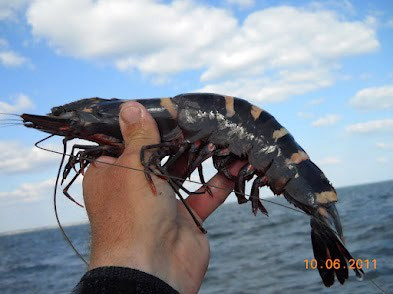Rise in Asian Tiger Shrimp May Pose Invasive Threat to Native Species

The recent increase in the sightings of non-native Asian tiger shrimp off the US Atlantic and Gulf of Mexico coasts has prompted scientific investigation to determine the possible consequences for native fish and seafood in those waters.
Although native to Indo-Pacific, Asian, and Australian waters, rising numbers of the species have been noted along the southeast and Gulf coasts of the United States.
In the past, small numbers of this invasive species have been reported in US waters for over a decade. Sightings have notably increased over the past few years.
Researchers from the US Geological Survey (USGS) and the National Oceanic and Atmospheric Administration (NOAA) are now working with state agencies from North Carolina to Texas to look into whether these shrimp carry disease, compete for the same food source, or prey directly on native shrimp.
The NOAA reported that an investigation is also under way to determine how this transplanted species reached US waters, and what is behind a recent rise in sightings of the non-native shrimp.
"We can confirm there was nearly a tenfold jump in reports of Asian tiger shrimp in 2011," Pam Fuller, the USGS biologist who runs the agency's Nonindigenous Aquatic Species database said in a statement. "And they are probably even more prevalent than reports suggest, because the more fisherman and other locals become accustomed to seeing them, the less likely they are to report them."
It is however not clear what factors triggered the recent round of increased sightings and scientists have also not officially deemed the Asian tiger shrimp "established" in the region.
As per reports, it is possible that the species may have escaped from aquaculture facilities.
Similar to other non-native species, there are concerns over the potential for novel avenues of disease transmission and competition with native shrimp stocks, especially given the high growth rates and spawning rates compared with other species.
"The Asian tiger shrimp represents yet another potential marine invader capable of altering fragile marine ecosystems," stated NOAA marine ecologist James Morris. "Our efforts will include assessments of the biology and ecology of this non-native species and attempts to predict impacts to economically and ecologically important species of the Atlantic and Gulf of Mexico."
To look for answers, NOAA and USGS scientists are examining shrimp collected from the Gulf and Atlantic coasts to look for subtle differences in their DNA, information which could offer valuable clues to their origins. This is the first look at the genetics of wild caught Asian tiger shrimp populations found in this part of the US, and may shed light on whether there are multiple sources.
© Copyright IBTimes 2025. All rights reserved.




















